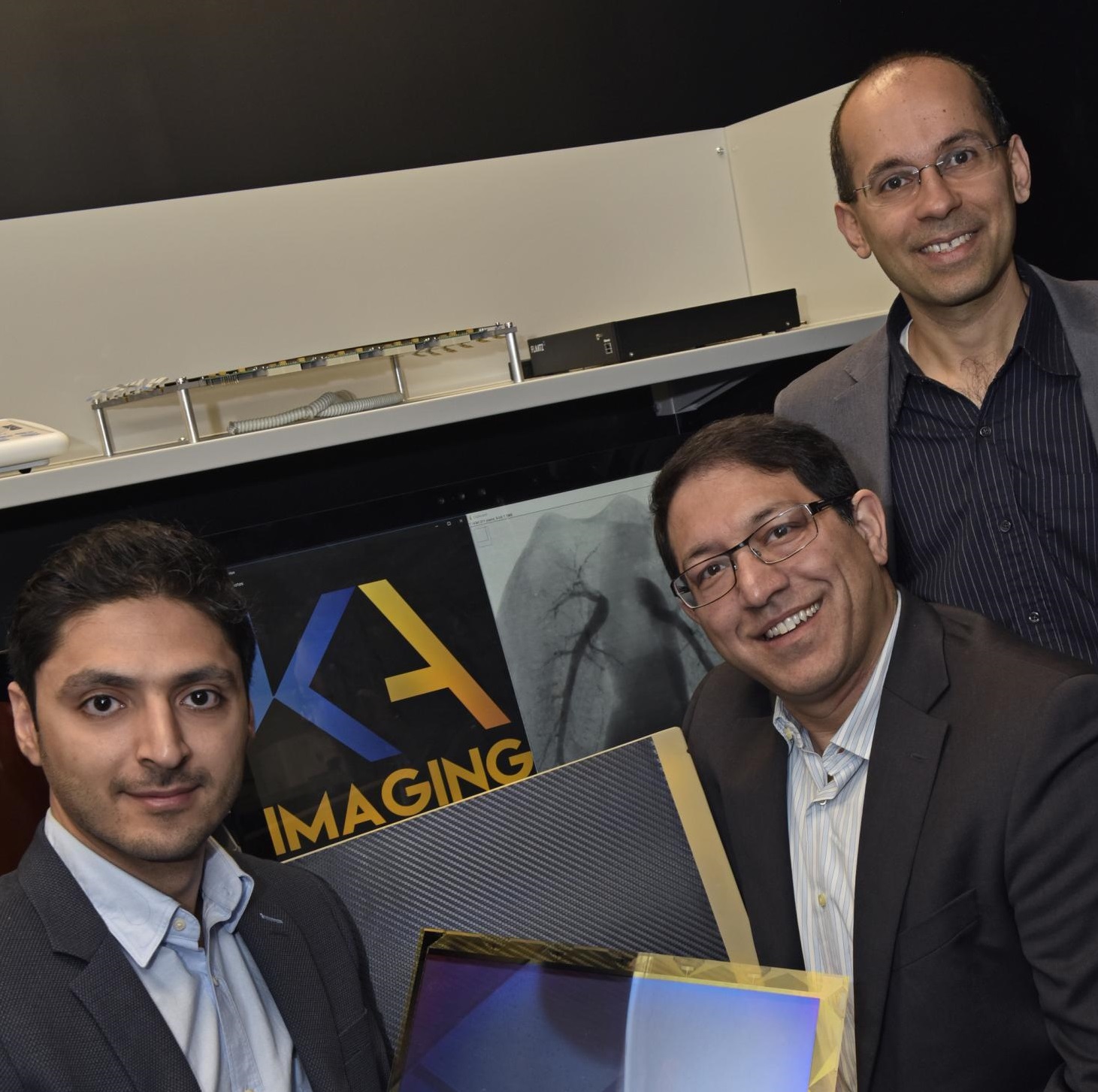A novel combination of advanced design tools, low cost materials and commonly used manufacturing technologies and processes is helping University of Waterloo engineering professor Karim S. Karim develop better, safer imaging at a lower cost.
His startup company, KA Imaging, is commercializing a highly sensitive X-ray detector that produces a higher quality image with almost 40 percent less radiation, making the technology safer for both patients and the clinicians that operate it.
And because the device can be made using the same materials and processes used for smartphones and TV screens, the cost to produce it is considerably less.
The technology’s potential to dramatically improve the screening and diagnosis of disease worldwide was recently recognized by Grand Challenges Canada, a federally funded global health innovation program, which awarded Karim and his collaborators $1 million to build a prototype and field-test it to diagnose TB in Zambia.
Professor Karim, his graduate student, Sina Ghanbarzadeh, and Chief Executive Officer Amol Karnick founded KA Imaging Inc. in 2015. It now has 15 employees.
The company’s detector produces a higher quality image with lower radiation than conventional X-rays. This is an important improvement, as radiation exposure is an issue both for patients, especially children and the seriously ill, and for X-ray clinicians, who may treat many patients in a single day.
The device is less expensive to make, says Karnick, because it doesn’t require specialized equipment or processes, which can drive up cost. The digital detector is built on glass and takes advantage of LCD technology and manufacturing. Its unique architecture puts the electronics under the detector, so it absorbs all the light coming in rather than only a portion of it.
“It is better for the patient and better for the doctor because it produces images with higher contrast between bone and soft tissue,” says Karnick.
Karim has been exploring innovations in imaging for more than a decade, assisted by tools and expertise from CMC Microsystems. In 2003, his development of silicon-based devices and circuits for imaging earned CMC’s Colton Medal for Research Excellence, and that work led to a startup company. Now, as then, CMC is helping him advance his ideas towards commercial application.
“CMC provided access to state of the art CAD (Computer Aided Design) tools, which played a critical role in creating a first working prototype,” he says. “That prototype provided essential technical credibility and helped us to raise the necessary financing for KA Imaging to flourish.”
Ghanbarzadeh, a doctoral student, designed the detector and is leading the design team at KA Imaging.
Simple, low cost and rugged, the technology doesn’t need expensive infrastructure and specialized staff and maintenance. It addresses the needs of countries with limited or no access to imaging, Karim says. It could also improve access to health care in remote communities in Canada. The company’s long-term goal is to create a $1,000 model that could address the health needs of underserved communities.
KA’s strategy includes targeting large commercial medical imaging markets as well. The company is also looking at non-medical applications, such as airport screening, engine inspection in car plants, and contamination detection and quality control in the food industry.
For Karim, who also holds an MBA, discovery is of greatest value when it has utility. “I always keep the end use in mind. I always think of the consumer,” he says.
His track record of innovations includes a large area current mode active pixel sensor technology that is now used in biometric fingerprint readers for mobile phones. He has more than 200 publications in the field of large-area digital imaging electronics, and he has more than 15 patents issued or pending. In 2012 Grand Challenges Canada named him one of 15 “rising star” researchers in Canada.
He didn’t plan to start a new company to launch his latest innovation, but he wanted to make the technology available because of its potential to improve health in Canada and around the world.
“My main goal was to get the discovery out,” says Karim. The company is still in the early stages, but it expects to have a full-size commercial evaluation unit by the end of 2017.
Photo Credit: David Briggs/Photo Features
March 2017

